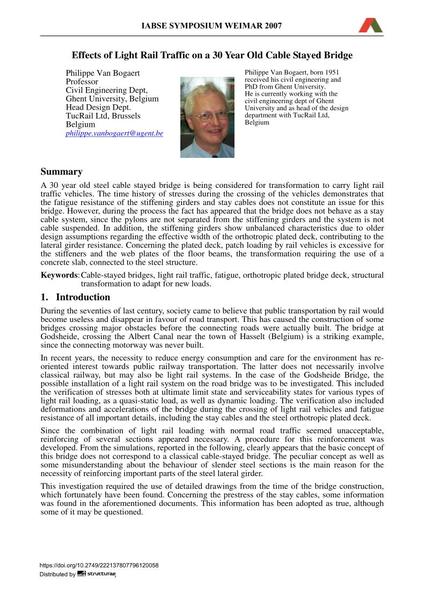Effects of Light Rail Traffic on a 30 year old Cable Stayed Bridge

|
|
|||||||||||
Détails bibliographiques
| Auteur(s): |
Philippe Van Bogaert
|
||||
|---|---|---|---|---|---|
| Médium: | papier de conférence | ||||
| Langue(s): | anglais | ||||
| Conférence: | IABSE Symposium: Improving Infrastructure Worldwide, Weimar, Germany, 19-21 September 2007 | ||||
| Publié dans: | IABSE Symposium Weimar 2007 | ||||
|
|||||
| Page(s): | 156-159 | ||||
| Nombre total de pages (du PDF): | 8 | ||||
| Année: | 2007 | ||||
| DOI: | 10.2749/222137807796120058 | ||||
| Abstrait: |
A 30 year old steel cable stayed bridge is being considered for transformation to carry light rail traffic vehicles. The time history of stresses during the crossing of the vehicles demonstrates that the fatigue resistance of the stiffening girders and stay cables does not constitute an issue for this bridge. However, during the process the fact has appeared that the bridge does not behave as a stay cable system, since the pylons are not separated from the stiffening girders and the system is not cable suspended. In addition, the stiffening girders show unbalanced characteristics due to older design assumptions regarding the effective width of the orthotropic plated deck, contributing to the lateral girder resistance. Concerning the plated deck, patch loading by rail vehicles is excessive for the stiffeners and the web plates of the floor beams, the transformation requiring the use of a concrete slab, connected to the steel structure. |
||||
| Mots-clé: |
Ponts à haubans
|
||||
